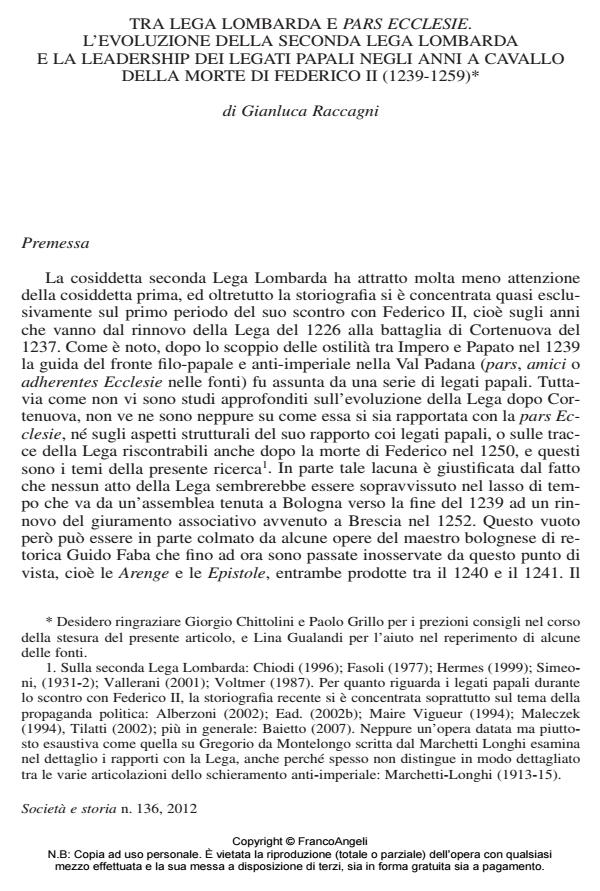Lombard League and "Pars Ecclesie". The Second Lombard League and the Leadership of Papal Legates in the years 1239-1259
Journal title SOCIETÀ E STORIA
Author/s Gian Luca Raccagni
Publishing Year 2012 Issue 2012/136
Language Italian Pages 27 P. 249-275 File size 528 KB
DOI 10.3280/SS2012-136001
DOI is like a bar code for intellectual property: to have more infomation
click here
Below, you can see the article first page
If you want to buy this article in PDF format, you can do it, following the instructions to buy download credits

FrancoAngeli is member of Publishers International Linking Association, Inc (PILA), a not-for-profit association which run the CrossRef service enabling links to and from online scholarly content.
The author examines the structural changes affecting the Lombard League after its alliance with the Papacy against Frederick II in 1239, in the light of sources so far neglected such as the works of the Bolognese rhetorician Guido Faba. He argues that as the conflict against the emperor escalated into a kind of crusade as early as 1240, the League evolved from a corporate body into little more than a multilateral coalition dealing with military and diplomatic matters. Moreover, the League came to be included in a larger Pars Ecclesie and fell under the leadership of a series of papal legates. At least until 1252, however, it held fast to a distinct identity inside the Pars Ecclesie, and evidence is not lacking of frictions between some of its members (especially Bologna) and the papal legates. The latter’s leadership, moreover, came to an end in 1258- 59, after the failure of the crusade proclaimed against Ezzelino da Romano and as a result of a deliberate policy on the part of the Holy See.
Keywords: Lombard League, city communes, Frederick II, Innocent IV, papal legates, crusades, Alexander IV, Gregory IX, Papacy, Bologna, Milan.
Gian Luca Raccagni, Tra Lega Lombarda e pars Ecclesie. L’evoluzione della seconda Lega Lombarda e la leadership dei legati papali negli anni a cavallo della morte di Federico II (1239-1259) in "SOCIETÀ E STORIA " 136/2012, pp 249-275, DOI: 10.3280/SS2012-136001